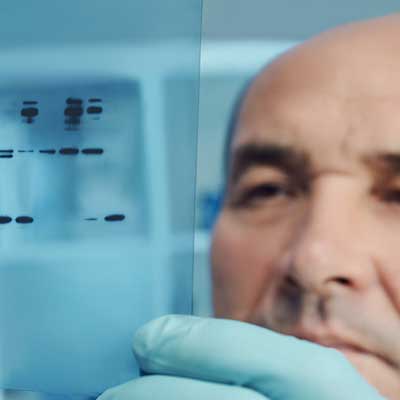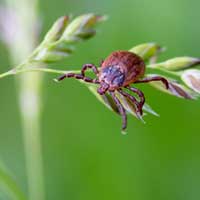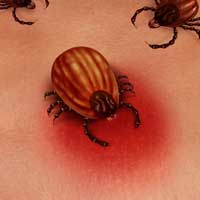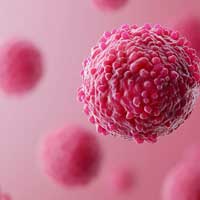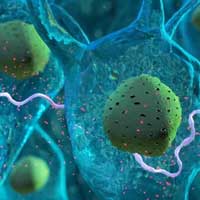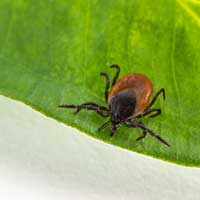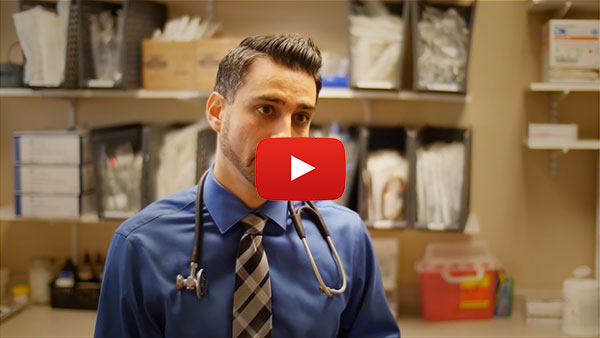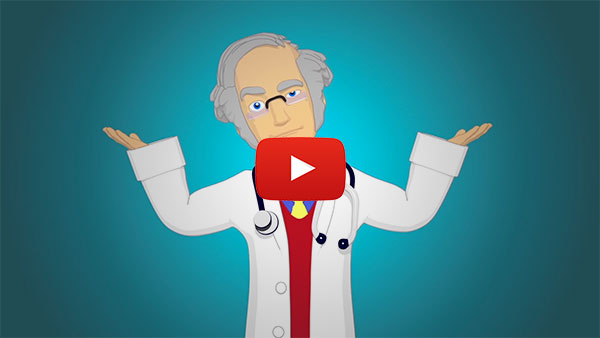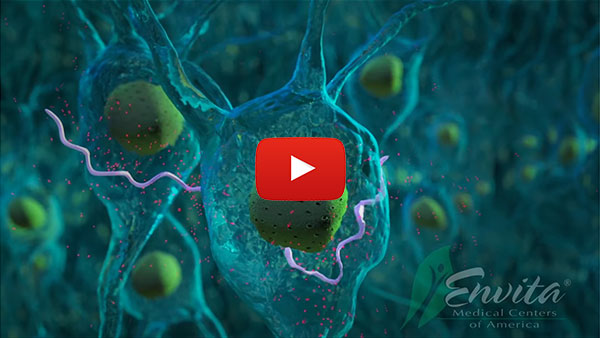The Critical Factors to Proper Lyme Disease Treatment
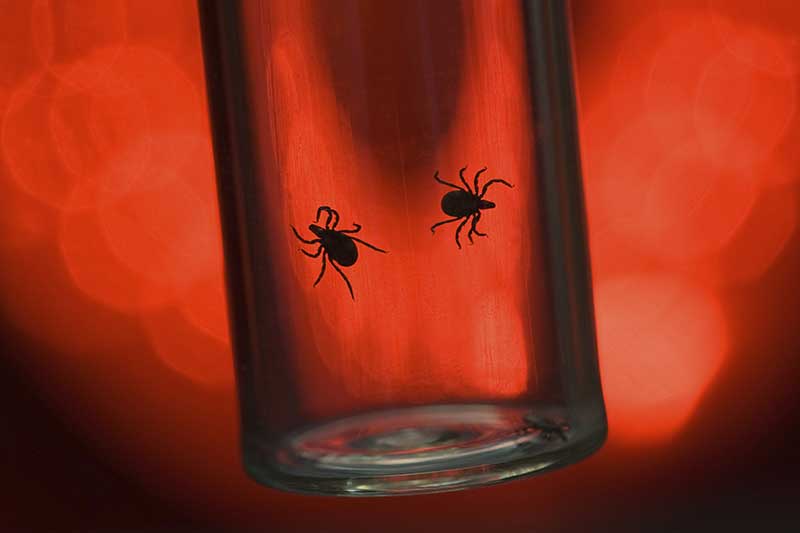
Over a decade of research to find the causes of numerous chronic illnesses has led to the realization that tick-borne diseases, such as Lyme disease and its many co-infections, are consistently present in patients suffering with this infectious disease. Chronic Lyme disease, caused by the bacterium Borrelia burgdorferi, is the primary culprit behind several persistent symptoms wreaking havoc on patients' lives. Treating Lyme disease and the resistant co-infections of Lyme can be difficult, if all the critical factors of Lyme disease treatment are not properly addressed.
Disclaimer: Individual results will vary. Envita makes no guarantees for outcomes. Each patient case is unique. Please consult your doctor before making any changes to your medical treatment. Not every patient is a candidate for care or achieves these results. Treatments used in this case may not all be FDA approved for the treatment of this condition.
Research-Driven Therapies Go Beyond Standard Antibiotic Treatment
Over 25 years of research and clinical experience has led Envita Medical Centers, a Center of Excellence in the treatment of Lyme disease, to assimilate these critical and often overlooked factors and publish several important papers on all stages of Lyme disease. One of the studies, published in 2014 in the Open Journal of Medical Microbiology titled, Borrelia burgdorferi: Cell Biology and Clinical Manifestations in Latent Chronic Lyme explains how B. burgdorferi is one of the most complex and advanced bacterial infections in the world.
B.burgdorferi has the evasive ability to shift its antigens, which makes it difficult for the immune system to locate and rid the body of this invasive bacteria. Its resistance to antibiotic therapy and other traditional and natural treatments makes Chronic Lyme Disease Complex inherently difficult to treat.
What Causes Lyme Disease?
When an ixodes scapularis, commonly known as a deer tick, infected with the bacteria B. burgdorferi bites a human, the infected tick may transmit the bacteria along with several other pathogens. These pathogens transmitted by the ticks, generally in their nymph stage, may trigger a host of other viral or fungal co-infections, which are not addressed by antibiotic regimens prescribed by standard healthcare providers.
If detected in the early stages, Lyme disease can be treated with oral antibiotics like doxycycline, amoxicillin, or cefuroxime, but in advanced cases, a course of antibiotics even with medicines like ceftriaxone, may not be enough to treat the infectious disease. The Infectious Diseases Society of America (IDSA) guidelines recommend antibiotic treatment for a duration spanning 10 to 28 days, depending on symptoms, and retreatment may be indicated for individuals with arthritis who have failed a first course of treatment.
The reason most patients fail treatment is because one or more of the critical factors of Lyme disease treatment is not being properly addressed. Treatment and diagnosis of Lyme disease require:
- In-depth testing, going beyond the standard blood tests like Elisa and Western Blot.
- Highly personalized plans capable of targeting each patient's unique infectious load, due to their varying set of co-infections and secondary infections.
Missing Critical Factors Aggravates Lyme Disease
When one or more of the critical factors of Lyme disease treatment is overlooked, patients struggle with disease recurrence or aggravation. These failed long-term results are often dismissed as Post-Treatment Lyme Disease Syndrome (PTLDS), which is different from Chronic Lyme Disease Complex. The Centers for Disease Control and Prevention (CDC) describes PTLDS as symptoms of pain, fatigue, or difficulty thinking that lasts for more than 6 months after treatment completion.
Left high and dry these Lyme disease patients often reach out to specialists in neurology, rheumatology, gastroenterology, chiropractic, naturopathy, and numerous Lyme literate doctors. These specialists may bring about short-term symptom reduction, but their treatments lack long-term results, due to the unaddressed critical factors to care.
Symptoms of Lyme Disease
- Erythema Migrans, the typical bull's eye rash which may be seen a few days after a tick bite
- Joint Pain
- Muscle aches
- Fatigue
- Headache
- Swollen Lymph Nodes
- Fever
- Chills
If these early Lyme disease symptoms go unnoticed and untreated, then the pathogens may penetrate the blood-brain barrier and affect your central nervous system, causing Lyme Borreliosis. Borrelia causes chronic inflammation of the brain cells, which damages the neurological system, leads to psychiatric imbalances, and triggers other serious complications such as:
- Meningitis
- Facial palsy
- Lyme arthritis
- Skin lesions
- Memory fog
- Shooting pain or numbness in the hands and feet
Decoding the 7 Overlooked Factors for Treating Lyme Disease
Standard healthcare providers may miss out on certain critical factors to care while treating Lyme disease patients, due to their lack of experience in this complicated infectious disease. Listed below are the 7 overlooked factors which must be addressed to help patients reach optimal health:
1. Getting a Complete and Accurate Diagnosis is key, but many patients lack access to it due to the following reasons:
- Not Being Tested for Lyme: Generally, people living in the northwestern, midwestern, and northeastern states, like Washington, Idaho, Wisconsin, Connecticut, and New York, are suspected to have Lyme when they manifest typical symptoms of the disease. However, be aware that there are other areas of the country that do not recognize Lyme disease as a condition and testing is not even conducted, let alone properly executed. Remember Chronic Lyme disease involves multiple types of infections, including bacterial, viral, fungal, and parasitic, which is why detailed testing is essential to select the appropriate treatments for a complete recovery.
- False-Negative Hurdles: Many patients suffering with chronic diseases, generally caused by Lyme coinfections and secondary infections, are in an immunocompromised state, and unfortunately standard Lyme disease tests rely on patients' immune system for diagnosis. The results of these standard tests depend on the immune system's production of antibodies against the bacteria to yield a positive result, but a weakened immune system cannot produce antibodies, thus leading to false negatives. To overcome this hurdle of false-negatives, patients need access to research-based advanced diagnostic utilizing Next Generation DNA sequencing assays, which can directly detect and quantify the presence of pathogens in the body.
- False-Negative Hurdles: Many patients suffering with chronic diseases, generally caused by Lyme coinfections and secondary infections, are in an immunocompromised state, and unfortunately standard Lyme disease tests rely on patients' immune system for diagnosis. The results of these standard tests depend on the immune system's production of antibodies against the bacteria to yield a positive result, but a weakened immune system cannot produce antibodies, thus leading to false negatives. To overcome this hurdle of false-negatives, patients need access to research-based advanced diagnostic utilizing Next Generation DNA sequencing assays, which can directly detect and quantify the presence of pathogens in the body.
2. Addressing MDR (Multi-Drug Resistance):
It is common for chronic Lyme disease infections to develop MDR (multi-drug resistance), which renders standard treatments like antibiotics and many natural therapies ineffective, after working for a short span of time. Published medical studies discuss in detail about the persistent clinical symptoms related to immune invasion, antibiotic resistance and various defense mechanisms of Borrelia Burgdorferi. This bacterium constantly shifts its surface antigens to effectively elude attack from the body's own immune system, while engaging in various other ways to resist treatments, which is why they need targeted adjunctive therapies.
3. Stripping Biofilm:
Biofilm is a protective sludge that surrounds the infectious organisms, preventing antibiotics and your own immune system, from impacting the organisms. This protective sludge also allows them to release chemicals, which helps in expanding the colony of infections. Stripping away the biofilm communities is an essential part of effectively treating Lyme disease and eliminating all persistent symptoms.
4. Crossing the Blood-Brain Barrier with Treatment:
- Shuttling Medications Across the Blood Brain Barrier: The brain has a highly selective permeable barrier called the Blood-Brain Barrier that normally protects the brain from foreign invaders, but B.burgdorferi's unique characteristic enables it to penetrate this barrier, triggering psychological and neurological symptoms. The presence of this bacteria in the brain and central nervous system causes inflammation, leading to symptoms like tremors, seizures, brain fog, chronic headaches, and pain. To affect the bacteria at this stage, patients need powerful treatments including intravenous antibiotics, which can help in a holistic recovery.
- Minimizing Antibiotic Use: The brain has a highly selective permeable barrier called the Blood-Brain Barrier Studies from the National Institute of Health NIH indicate how extended use of antibiotics is not beneficial for Lyme disease patients, which is why they need a powerful combination of natural and conventional medicines targeted to their unique set of infections.
5. Flushing Endotoxins and Biotoxins from the Body:
These endotoxins and biotoxins, released by the bacteria B.burgdorferi, are invasive and destroy multiple tissue types, while impacting the patient's immunity and their neurological and hormonal functions. Endotoxins are responsible for the vast majority of symptoms related to Chronic Lyme Disease, and they may also trigger autoimmune diseases in patients with certain genetic predisposition. In fact, microbursts of endotoxins released by the bacteria when it gets killed during treatment causes the Herxheimer reaction, making patients feel worse during treatments. To tackle Herxheimer reaction, Lyme disease treatment plans must include flushing out endotoxins throughout the process of treatment so that the patient can experience overall improvement.
6. Pain Medication Complications:
Pain killers, psychiatric, and anti-anxiety drugs are suppressive in nature, and they compete with the body's normal neurotransmitters and hormone receptor sites. The best example here is trying to fit multiple keys into the same keyhole all at the same time. Medications that treat symptoms and not the cause of these symptoms compete with treatments that need these receptor sites to be effective, this process complicates treatment significantly. Properly modifying medications and putting the correct treatment plan in place is essential.
7. Reestablishing the Immune System:
Lyme disease patients have depressed immune system, which makes them vulnerable to many other opportunistic infections. These bacterial, viral, fungal, and parasitic infections may co-exist at the same time. To address this infectious load, reestablishing immune system with advanced immunotherapy is crucial. Treatment must include targeting natural killer cells, cytokines, and other essential parts of the immune system, which helps in rebuilding patients' immunity for their holistic recovery.
Steps to Prevent Lyme Disease
Lyme disease can be a complicated infection, so people must take every necessary precaution to prevent it. Here are some steps to avoid tick-bites, which is the primary cause of Lyme disease:
- Avoid wandering in tall grassy and wooded areas.
- Try to keep to the center of the trail while hiking, running, or jogging through trails in the woods.
- Wear fully covered clothing and closed shoes when you are engaged in outdoor activities in bushy, overgrown regions.
- Use insect repellents to minimize chances of tick bites.
- Ensure your insect repellent includes Deet, which is considered the most effective primary ingredient in repellents.
- Always shower after returning from an outdoor activity, to remove any ticks crawling on your body.
- Currently there are no Lyme disease vaccines on the market and do not rely on an old vaccine, which you may have taken before 2002, to offer you protection from the bacteria. According to CDC, the protection provided by this vaccine decreases over time.
With Chronic Lyme Disease Complex there are many unique complications and presentations to consider. This is why patients don't respond to most treatments long-term and why patients need highly personalized treatments to address all factors involved in their case. If you have any questions about Lyme disease or this article don't hesitate to ask us. We have a dedicated team who can help answer any specific questions you may have as well as provide more in-depth educational material to help you make the right decisions when it comes to proper chronic Lyme disease treatment.
Choose Envita Medical Centers
Our team is ready to help you get your life back! Please enter your contact information and a Patient Care Expert will contact you shortly. If you would rather speak now, please give us a call at 1-866-830-4576.










